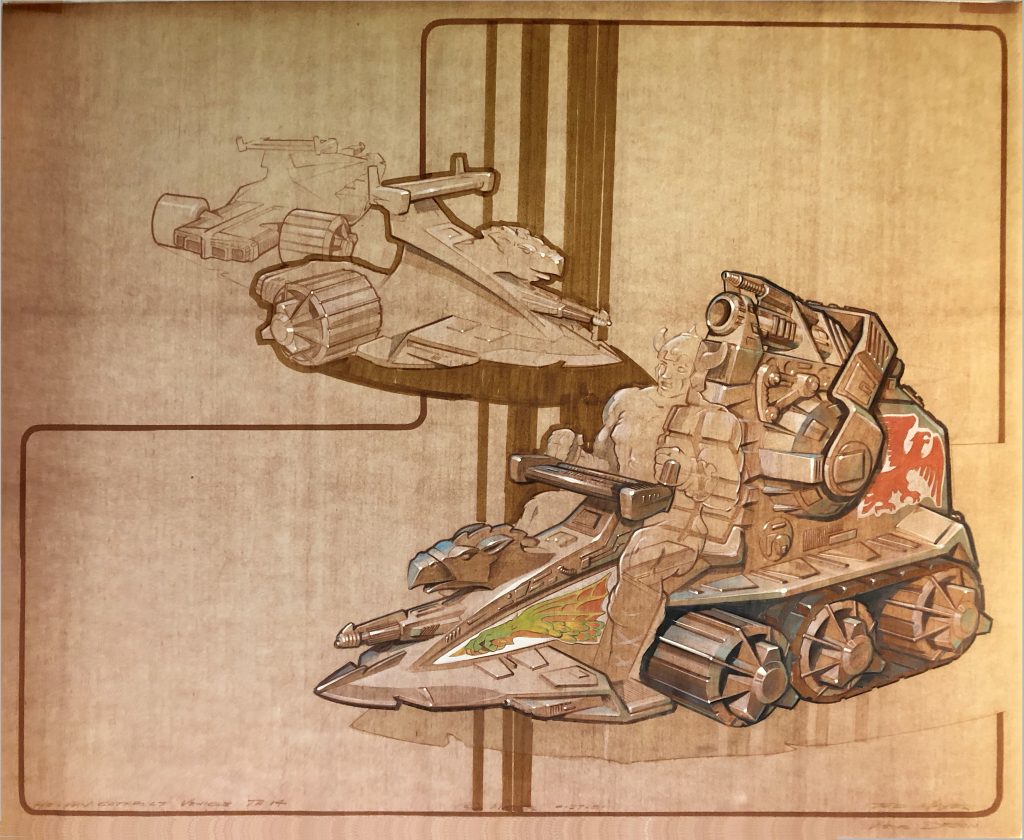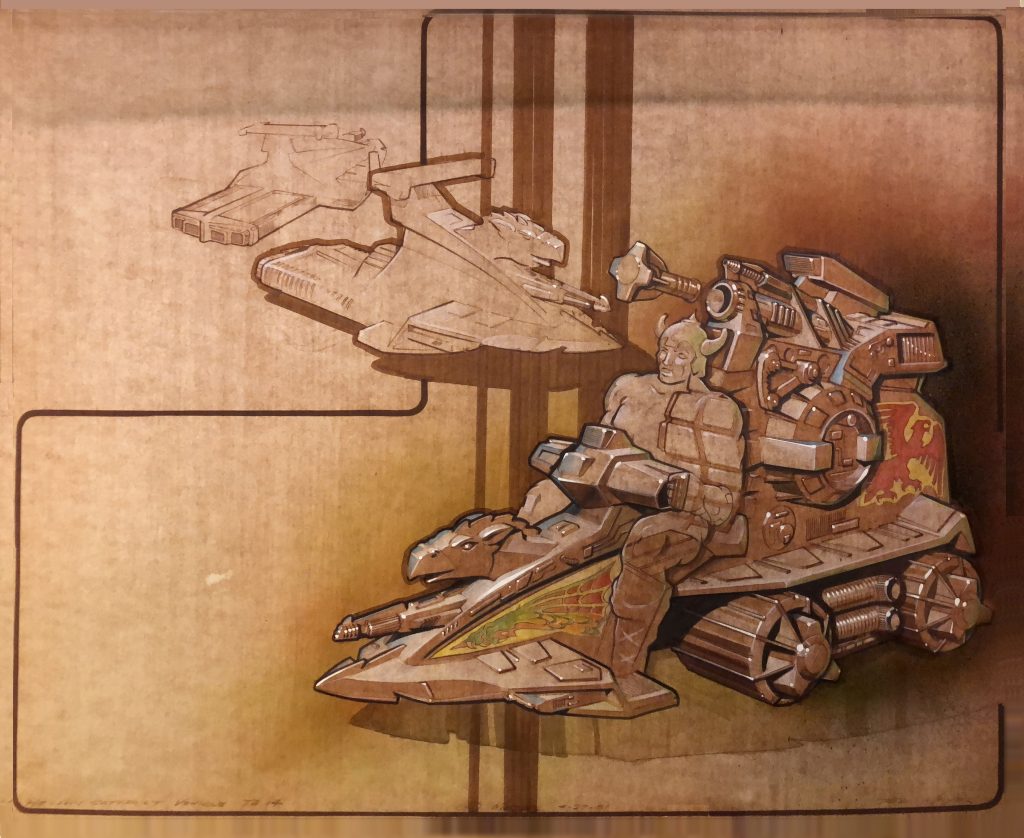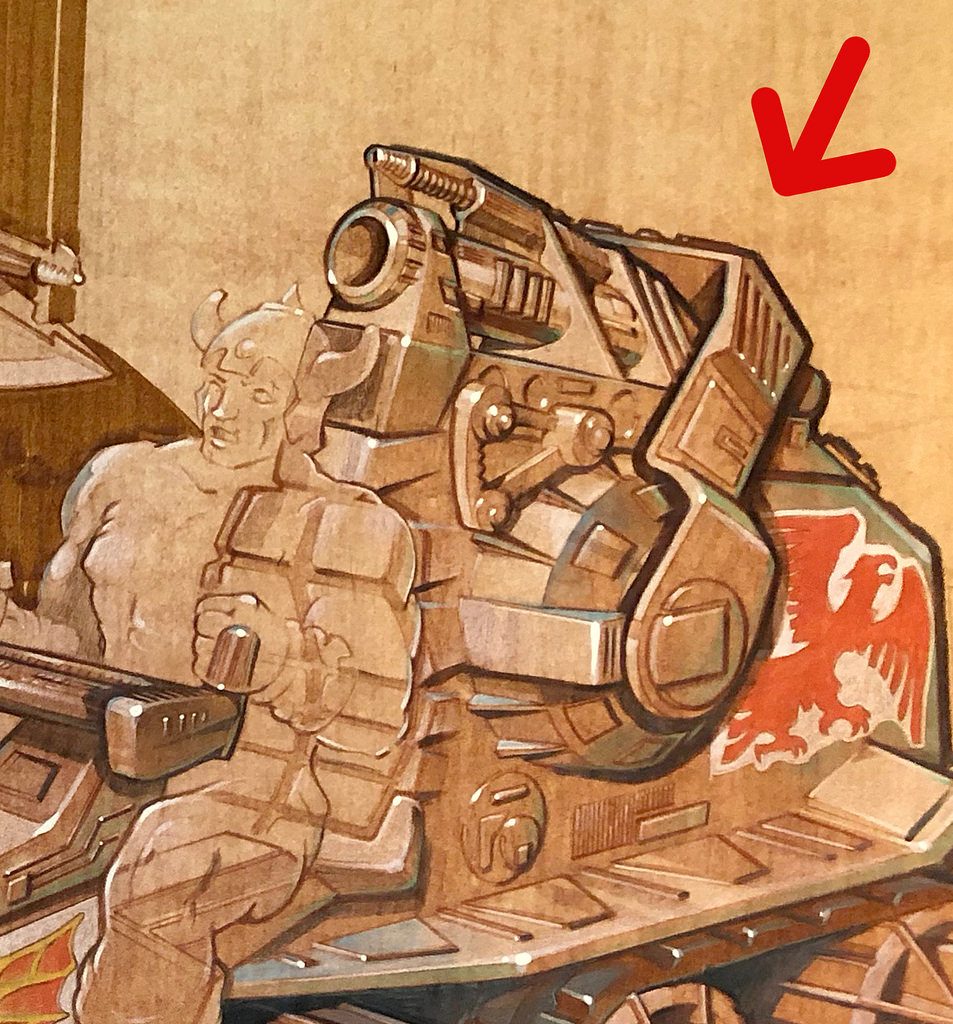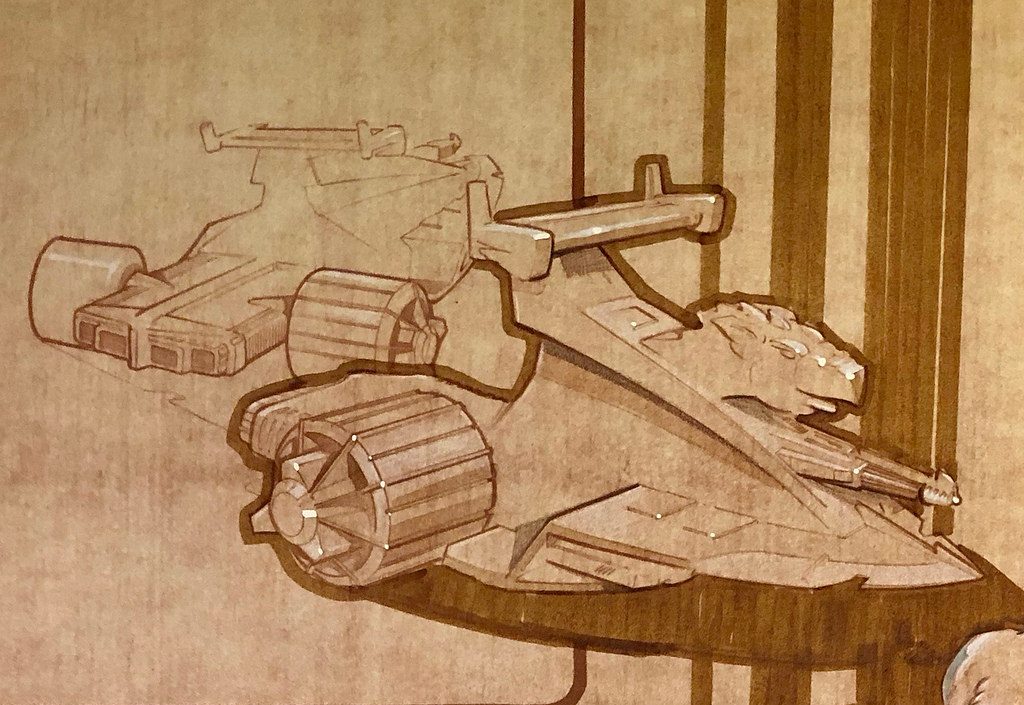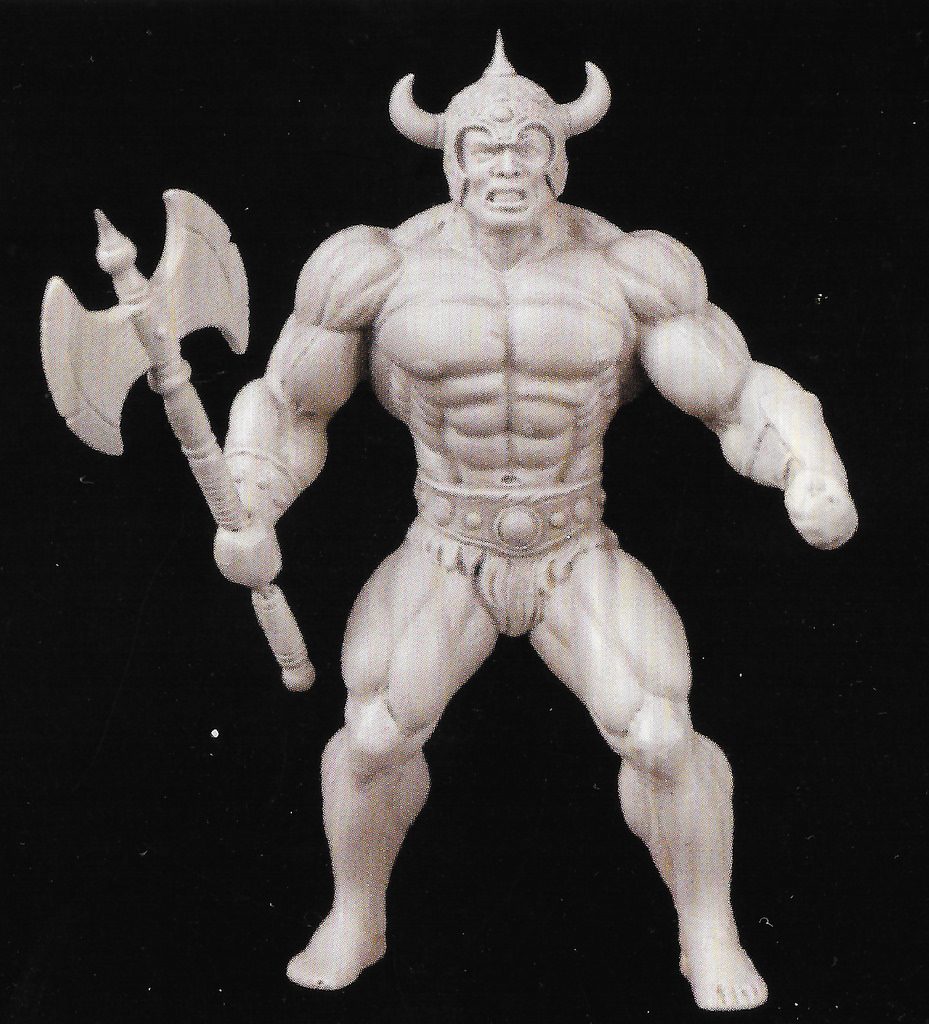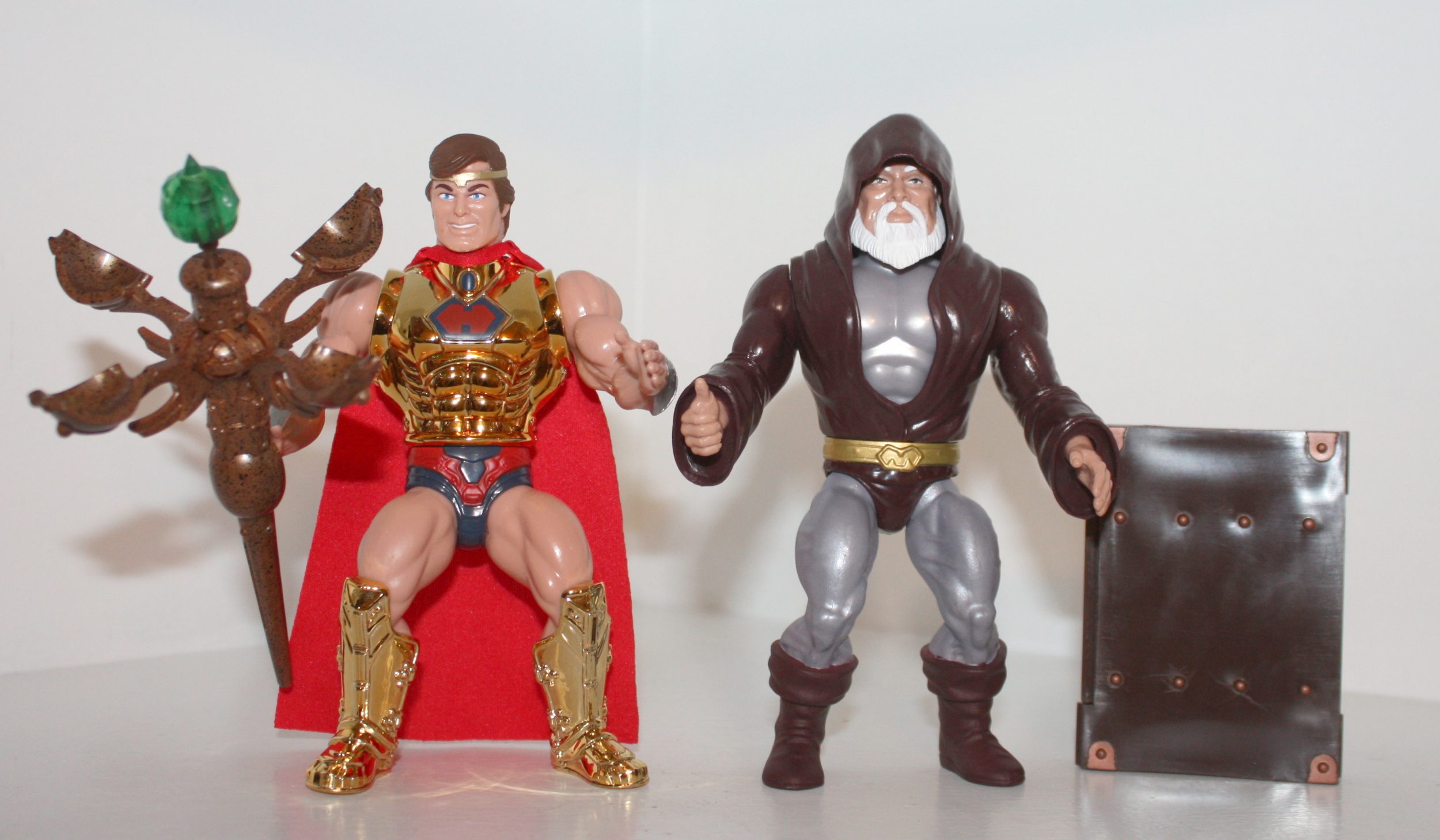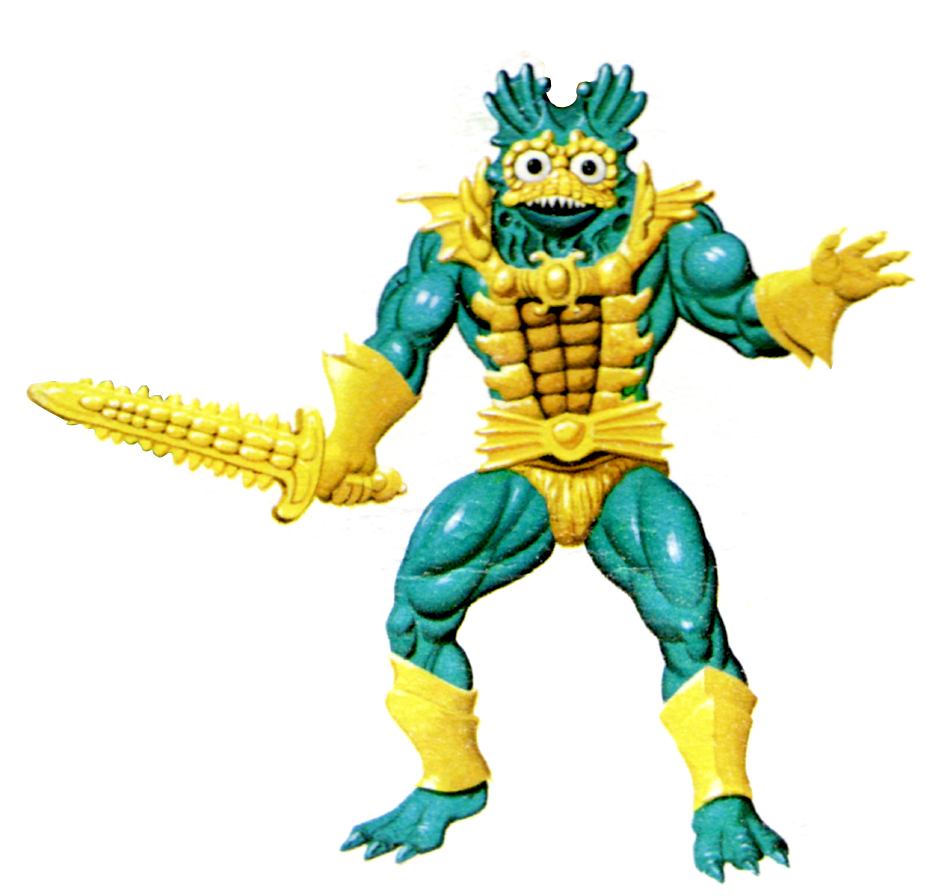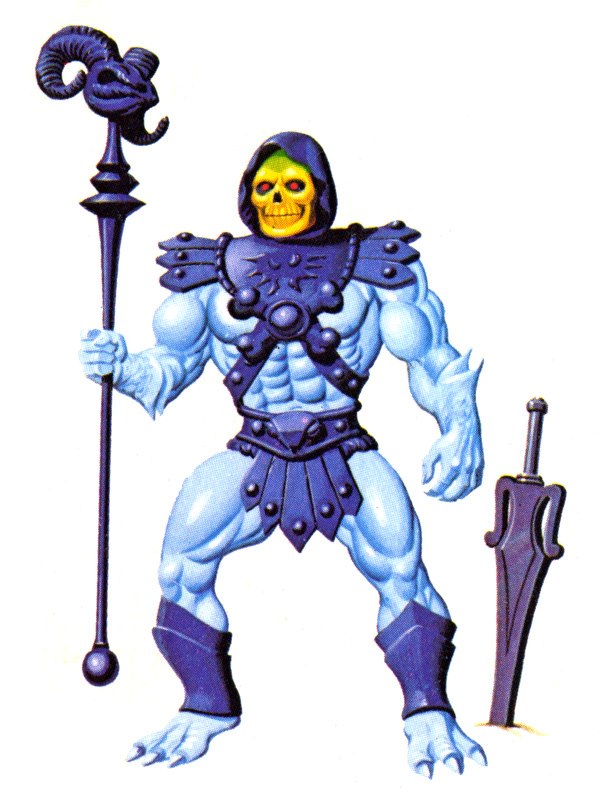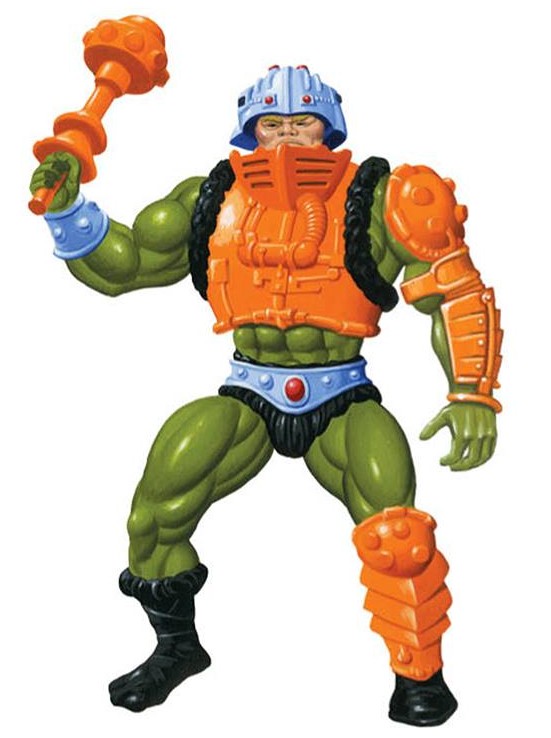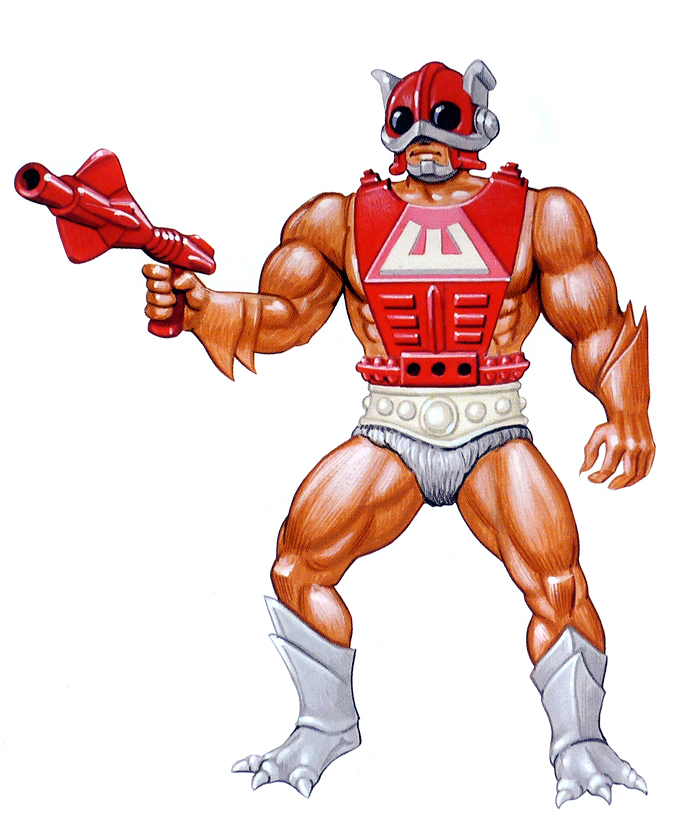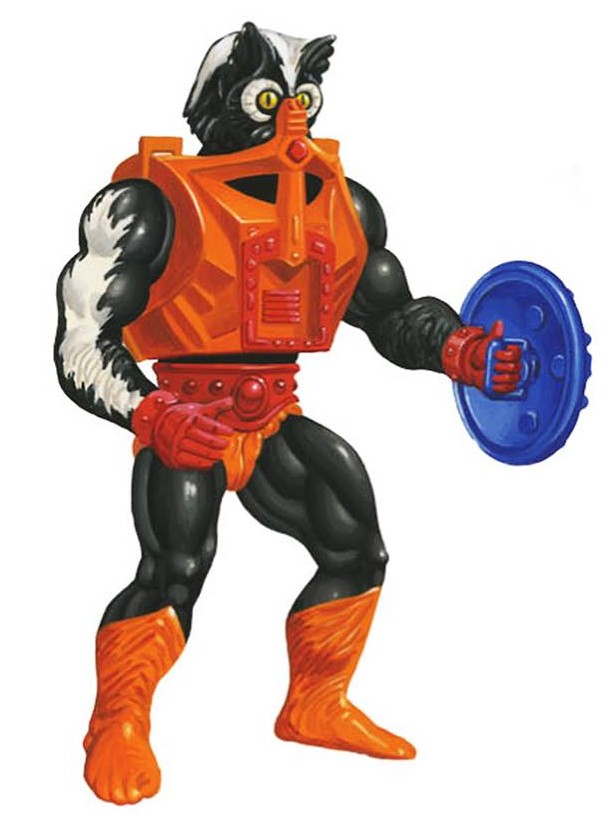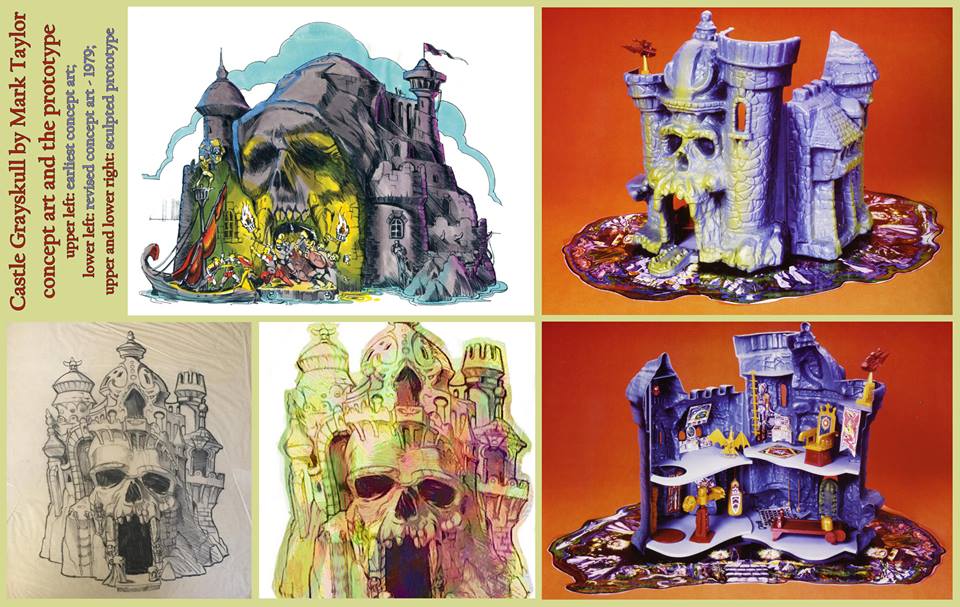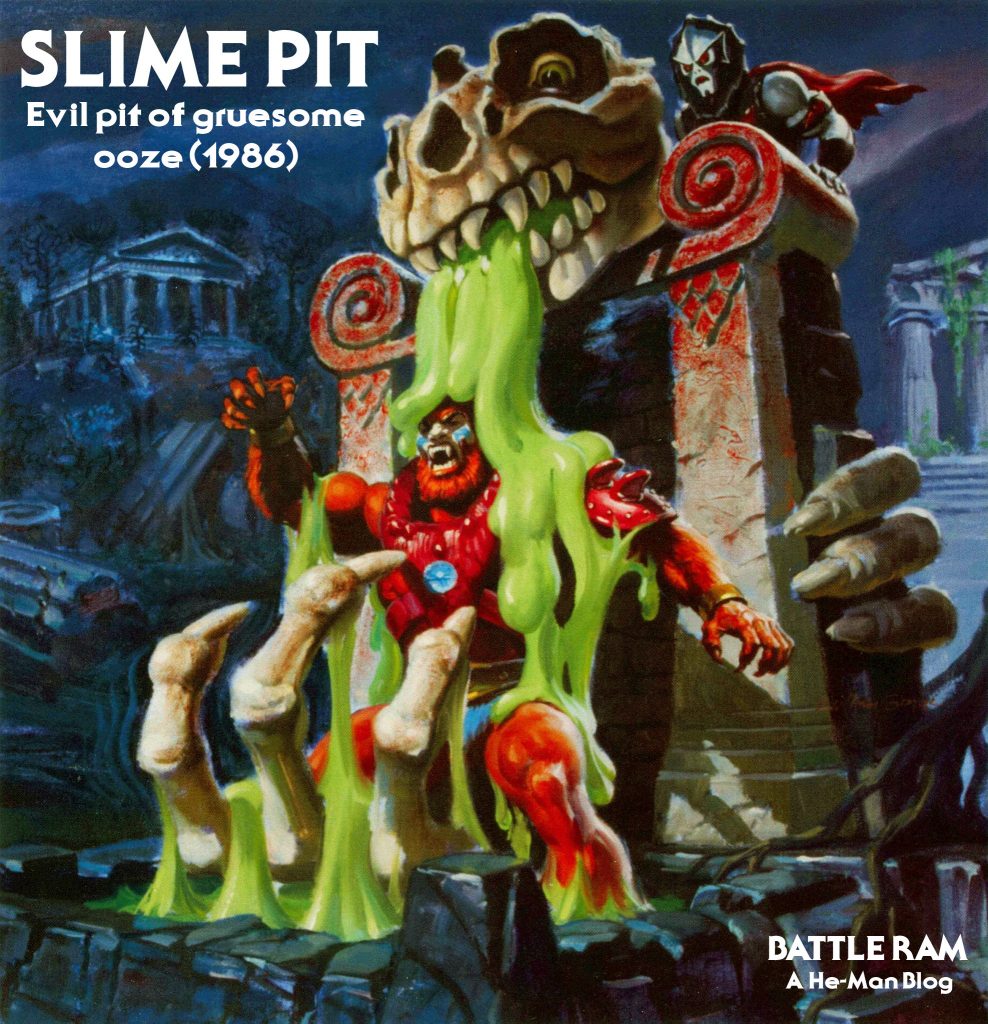
The Slime Pit was the second and final small playset released in the original Masters of the Universe toyline (the first was Point Dread, in 1983). Of all the playsets MOTU had to offer, the Slime Pit perhaps packed the most punch for its size. It was all centered around one play feature, but it what a feature!
Design & Development
The Slime Pit was designed by Ted Mayer, from an idea that came out of the boy’s design group’s many brain storming sessions.

In the above illustration, you can see many of the hallmarks of the final playset are in place, including the grabbing hand in the front, the hand around the side and the scroll design near the top. The slime-spewing head is wolf-like in this concept (a frequent theme in Ted’s designs, it seems), whereas the final version seems to have more of a dinosaur skull look.
Mattel more or less invented slime as a commercial product, and it has been a popular seller since the late 1970s. The Slime Pit was a clever way for Mattel to integrate its popular slime products into the world of Masters of the Universe.
Pixel Dan has done some extensive research on the history of slime. Take a moment to check it out in this video:
There is also some great information about slime in this article at Plaid Stallions and again in this piece by Dinosaur Dracula.
Production Playset
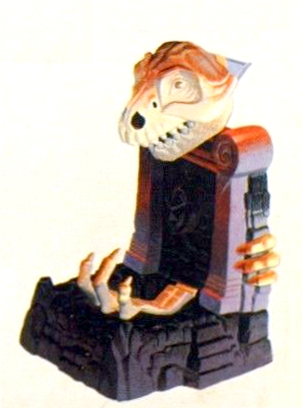
The final play set has a deeper pit area than the concept version. The paint applications are fairly simple, but it does have some well executed red and gray overspray on the gray stone areas and some brown overspray on the skull. These seem more well thought-out than the often haphazard looking paint applications given to the exterior of Castle Grayskull (particular later releases of the playset). Like the Fright Zone, the Slime Pit is adorned with Hordak’s visage (Hordak seems really into branding his image on all things Horde). There is also a sculpted skull near the back wall.
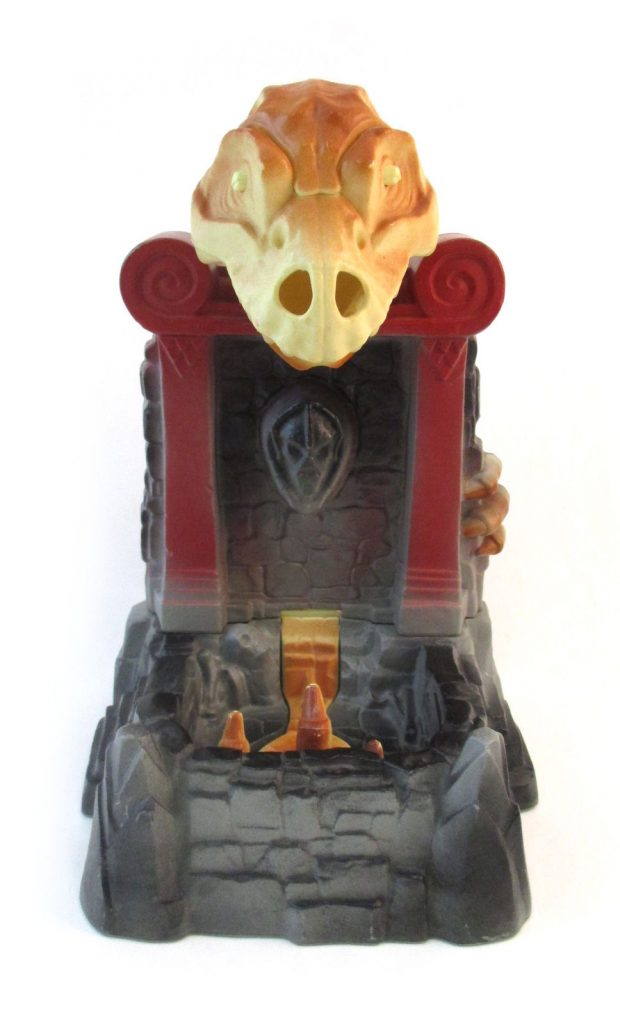




The playset came with a can of Mattel’s Horde Slime. This particular slime mix was much runnier than the kind of slime typically found on toy store shelves today. It was also available for free, separate from the playset, with the purchase of two action figures.



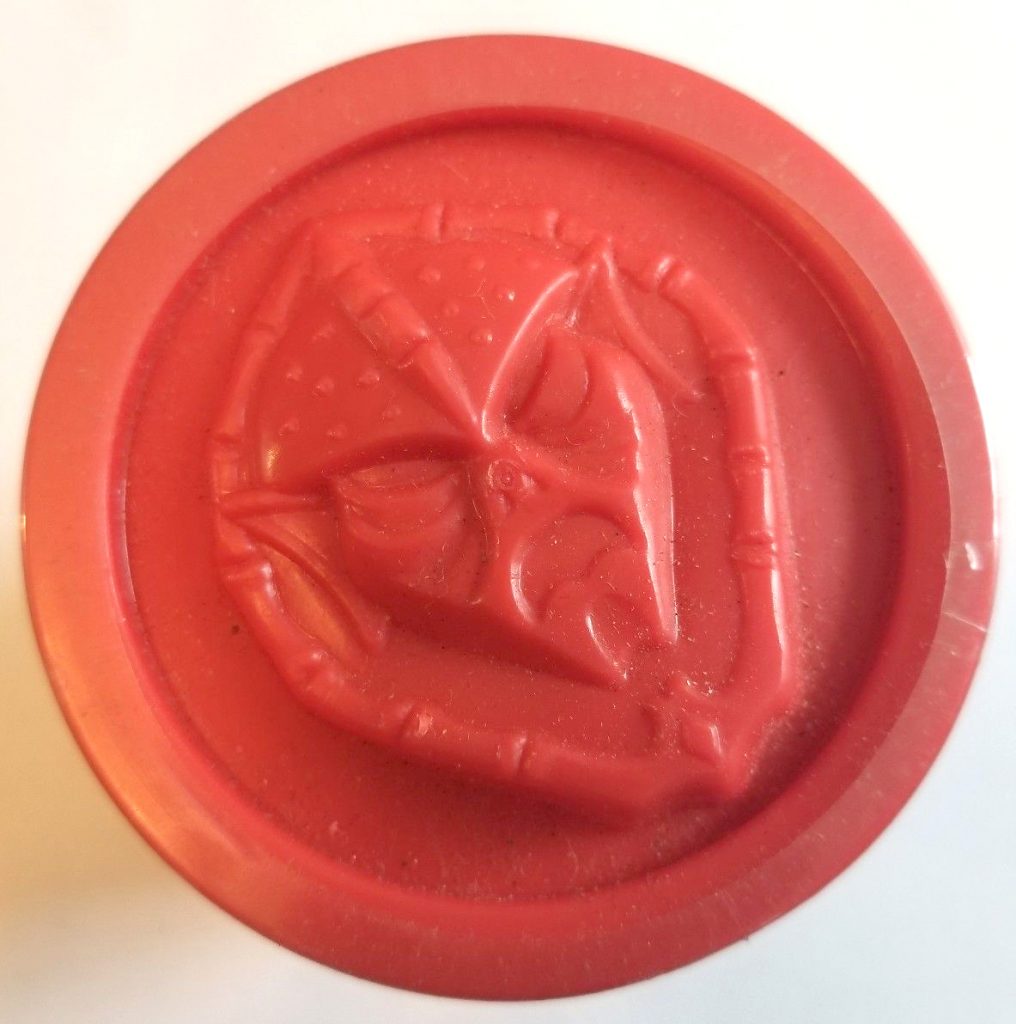
That runniness made it work great for the purposes of sliming action figures, but it also made it hazardous to rugs and upholstery, not to mention any furry MOTU figures like Moss Man, Panthor and Grizzlor. For that reason, there were a few warnings given about what not to do with the slime, which were of course promptly ignored by many enterprising young mad scientists.
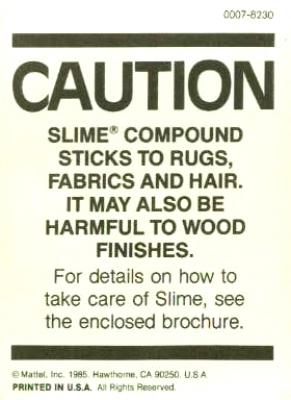
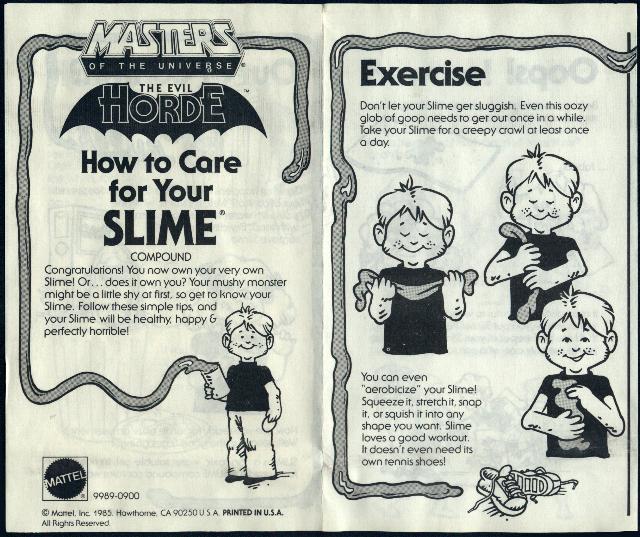


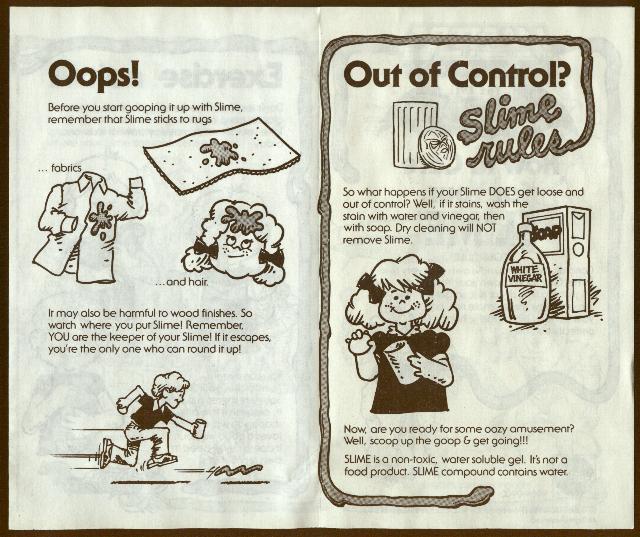


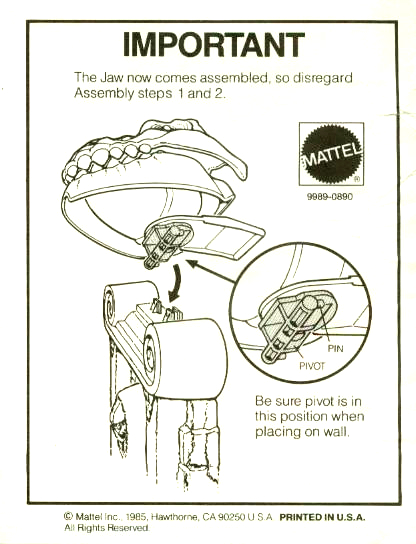
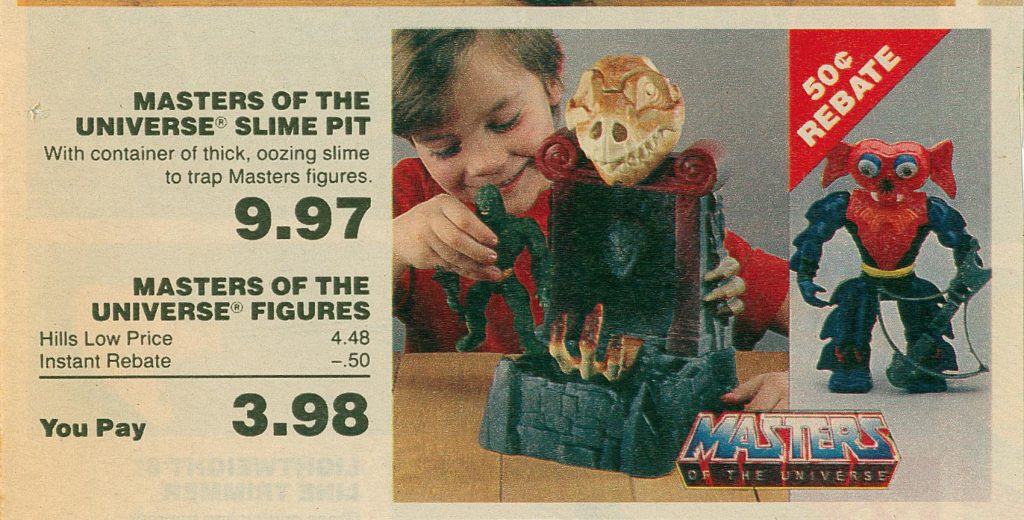
Packaging
The box art was painted by the late, great William George. Taking cues from the design of the playset itself, the scene is set in ancient Greco-Eternian ruins.
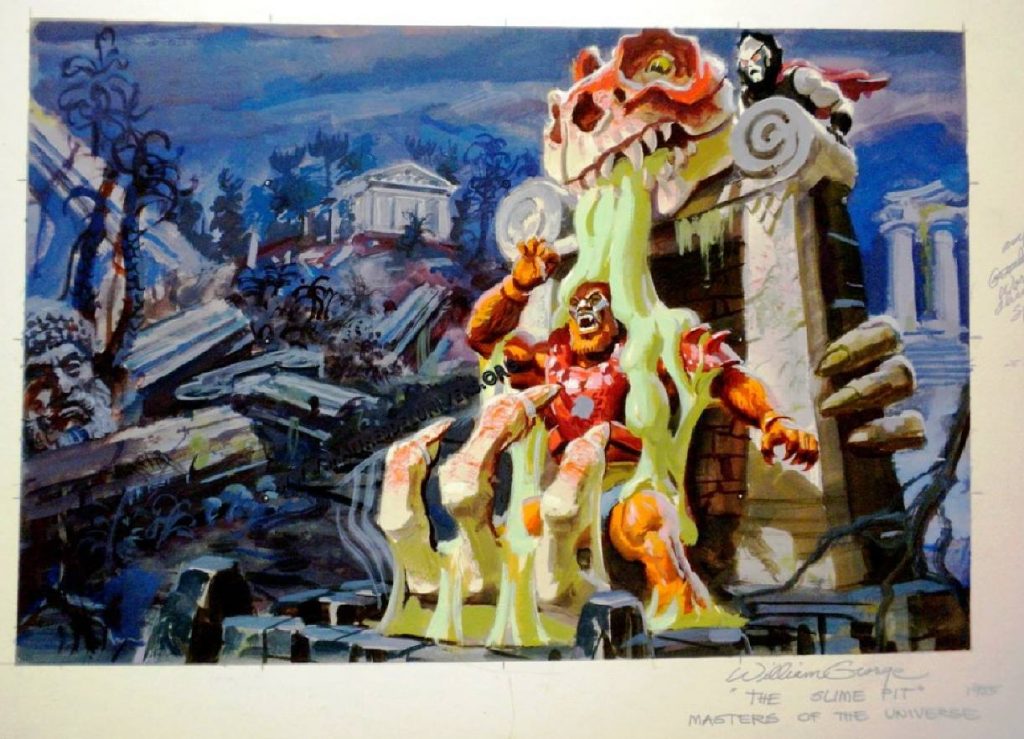







Minicomics
The Slime Pit came packed with Escape From the Slime Pit, which showcased the mini playset’s power to turn its victims into mindless slaves of the Horde. In the story, He-Man is slimed and is only restored to his right mind by exposure to brilliant light:





Animation
The Slime Pit appears in the She-Ra episode, “Loo-Kee’s Sweetie.” It doesn’t really look like the playset, but it does feature slime and a number of dinosaur-like bones. In the story, the Slime Pit saps its victims’ strength rather than turning them into zombie slaves. It’s easy to see why this less disturbing concept might be preferred for the purposes of an animated kids’ show.



Other Media
The Slime Pit was featured in the June 1986 edition of Masters of the Universe Magazine, as both the cover subject and as a poster by Earl Norem. The artwork features Buzz-Off as the victim and Flying Fists He-Man riding to the rescue on Battle Cat.
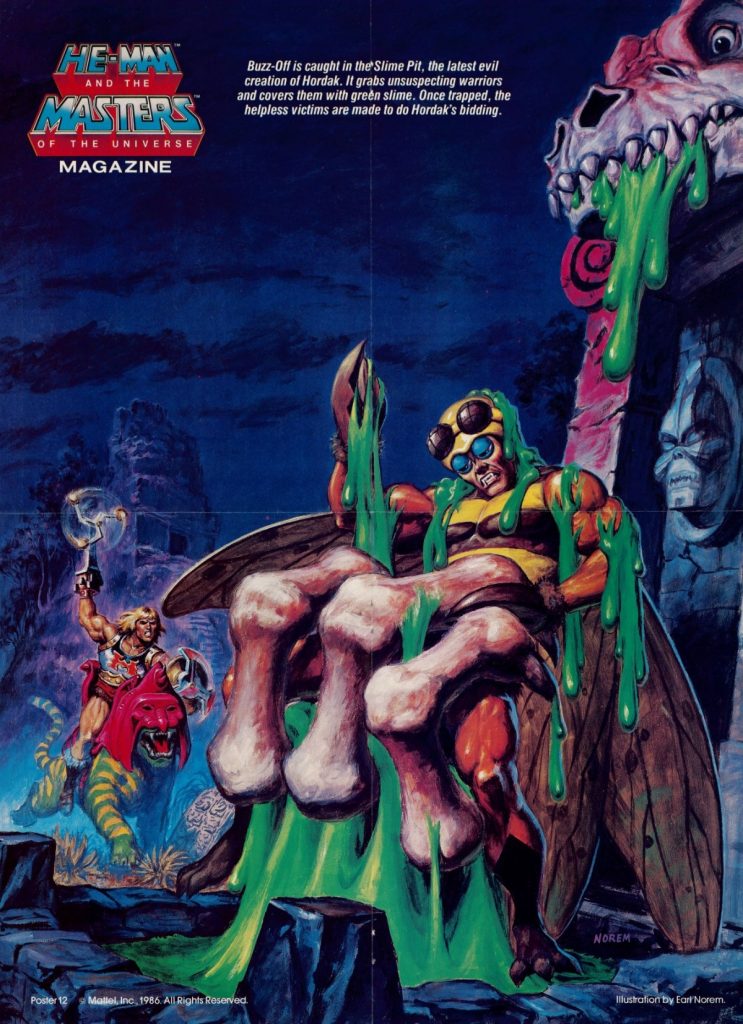
It also is the centerpiece in a Kid Stuff audio book called Prisoner In the Slime Pit:


Like the Slime itself, the Slime Pit was a concept that Mattel would revisit over and over again:

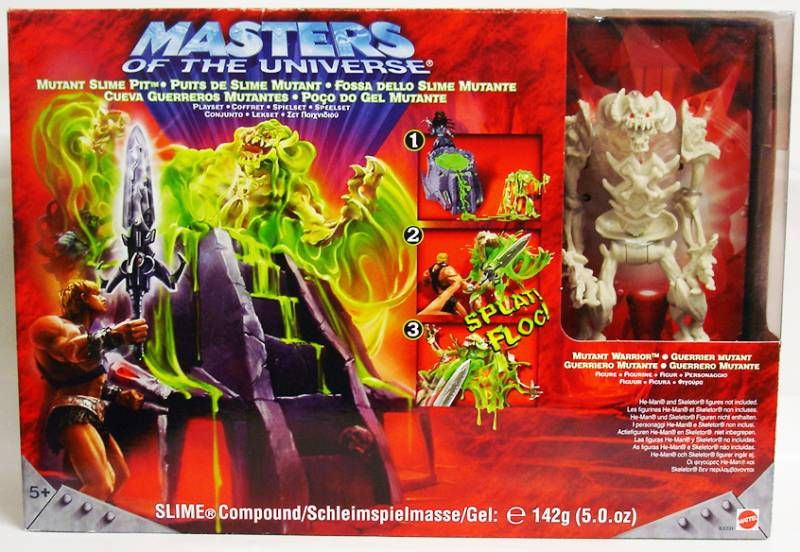
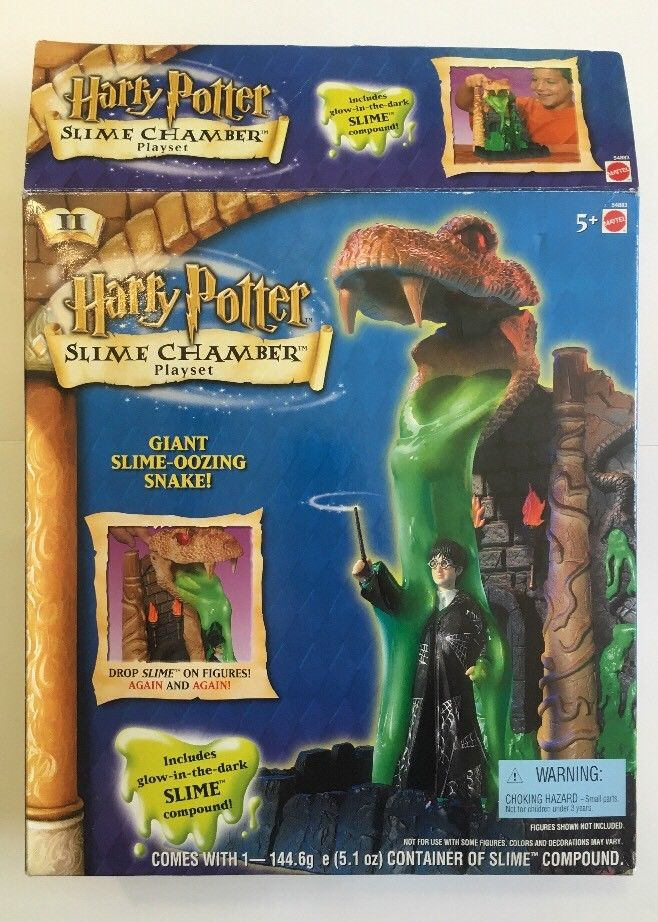
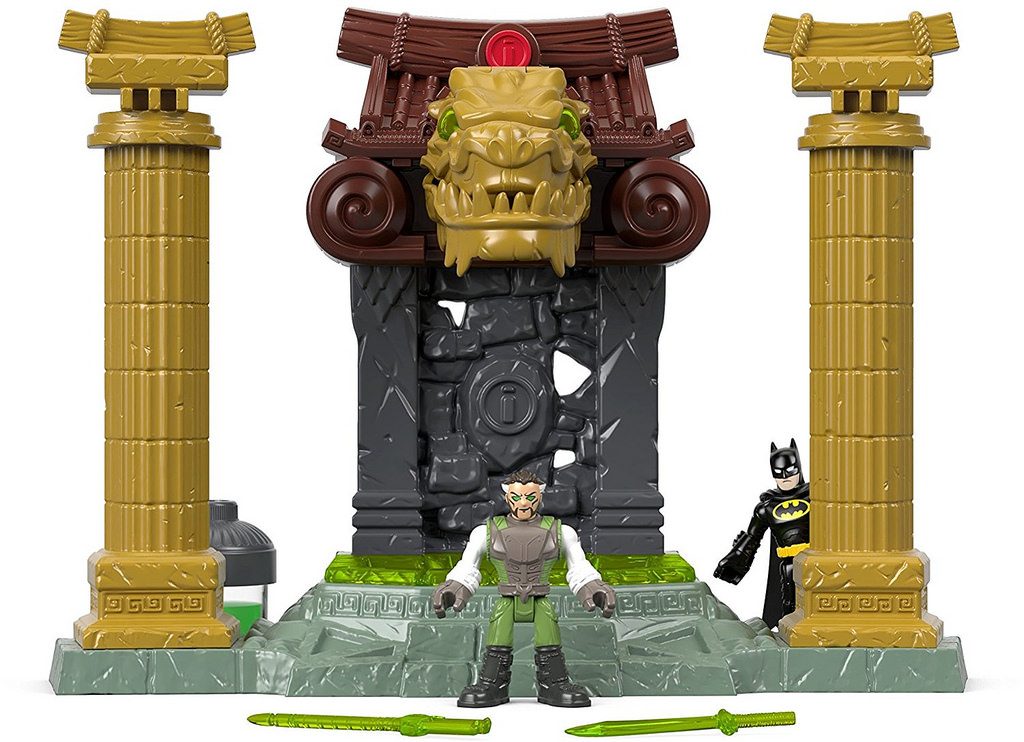
Want to support the blog? Consider becoming a Patreon supporter. You’ll also gain access to exclusive content and early access to posts on the blog. Thank you!
